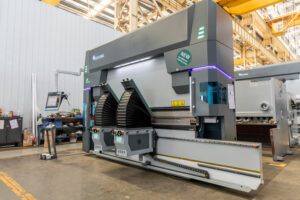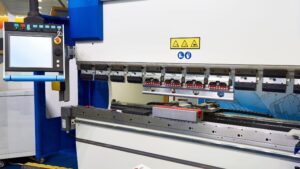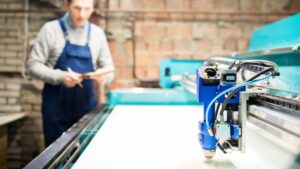Buying a press brake machine can be a difficult decision. There are many different types of press brakes available in the market. Every type comes with further configuration. This can lead to confusion among even professional operators.
This article will provide a complete guide for buying a press brake. You will know about the factors to focus on and the pitfalls to avoid. Based on the information presented here, you can make a correct decision and get complete value for your investment.
Primary Factors to Consider When Buying a Press Brake
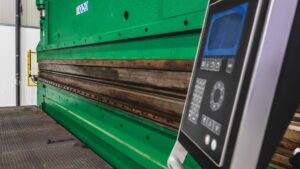
There are various factors at play when buying a press brake. Choose a press brake based on the particular factors that apply to you:
Tonnage Capacity
Tonnage capacity relates to the force that a press brake machine can apply. A higher force means the ability to bend a thicker material. Choose a tonnage capacity that can easily bend the metal in your particular application.
Bending Length
Bending length relates to the maximum length of the workpiece that a press brake can bend. The bending length of the machine depends on your particular applications. You require a long bending length if you intend to make large-scale metal parts.
Type of Press Brake
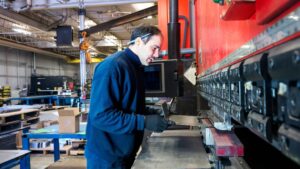
There are many different types of press brake machines. Each of these comes with its own set of advantages and limitations. You can choose the right press brake based on your use case. These different types of press brakes are:
Mechanical Press Brakes
The mechanical press brake is the most basic type of press brake. It is based on a flywheel and clutch mechanism. Electric motors power the flywheel clutch assembly. Mechanical press brakes have a large tonnage capability. They can easily bend three times their rated capacity. Additionally, they have a simple build leading to simpler maintenance. However, a major drawback of these brakes is their inability to stop midway. Once a cycle starts, the ram will complete the entire cycle motion.
Hydraulic Press Brakes
The hydraulic press brake uses the dynamics of water pressure to create the force for the bending. There are multiple hydraulic oil cylinders to provide various bending settings. This provides a greater number of options and adds to the bending precision. However, a hydraulic press brake is highly sensitive. Their operation should never exceed the rated tonnage value. Additionally, there is the risk of fluid leaks from the cylinders.
Electric Press Brakes
Electric press brakes use multiple servo brakes to move the bending ram. The servomotors provide accurate control over the bending angle. However, electric press brakes have severe limitations in tonnage capability. Additionally, electric press brake does not perform well for high volume production. It is also known as a CNC press brake machine.
Hybrid Press Brake
Hybrid press brakes combine the operation of hydraulic press brakes and electric press brakes. These machines have automatic start and stop operation. Additionally, replacement of electric motors with hydraulics provide a higher bending force. However, they require complex maintenance in case of a breakdown.
Pneumatic Press Brakes
Pneumatic press brakes replace oil cylinders with air. Compressed air can provide a high bending force necessary for most materials. These brakes have a lower bending prowess compared to hydraulic press brakes. However, there is no risk of fluid leakage in the operation.
Box and Pan Brakes
A box and pan brake is also known as a finger brake. These press brakes are simpler than other alternatives. They are used for small-scale application of bending thin sheet metal. They are named so because their main application is manually bending metal sheet for making boxes and pans.
Precision
Certain projects require more precision than others. Choosing a lower accuracy press brake for a high precision requirement can lead to rejection of most parts. Therefore, check the bending precision of the press brake before buying it. This value is generally listed in the product’s technical information page.
Material Thickness
Thicker materials are harder to bend. Check the thickest material that the press brake can bend. This will provide a better idea of whether it can adequately perform your operations. Different materials might have different thickness limits.
Bend Complexity
If your application requires multiple bends, choose a press brake that is capable of doing so. Otherwise, you might have to do multiple workpiece setups. This increases the setup time significantly, increasing the operating costs. It is better to invest these costs initially in a higher-capacity press brake.
Production Efficiency
Different press brakes have a difference in bending speed. Use this value to find out how many parts it can create for you in a day. Choose a press brake if it fulfills your daily production volume requirements.
Operator Skill Level
Complex press brakes can provide a higher range of features and automation. However, it also requires a higher skill level of the operator. Consider the skilled operator’s availability before choosing a complex press brake option.
Secondary Factors to Consider For the Right Press Brake
Once the primary factors mentioned above are decided, you can evaluate further factors to make a better choice. These factors are:
Press Brake Configuration
There are two specialized configurations of press brakes available for niche applications. These configurations are:
Tandem Press Brake
A tandem press brake involves a setup of multiple individual press brakes. These press brakes are interconnected for a synchronized operation. A Tandem press brake is useful for bending a very long metal sheet. If a single press brake cannot fulfill your requirements, ensure that the press brake you choose has a tandem configuration.
Robotic Press Brake
A robotic press brake is a sheet metal bending solution with high automation. A robotic press brake is a great fit for fulfilling large production numbers. It can reduce the cost of production significantly for mass production of parts. However, these machines require frequent maintenance and good operator skill.
Type of Bending
There are three types of bending options with press brakes:
Air Bending
Air bending is the most popular press brake option. It applies to bending plate and sheet metal. Air bending uses a bottom tool in U-shape or V-shape press brake dies. The top tool is a radius punch. There is a large air pocket under the sheet metal due to the shape of the bottom tool. The punch applies force on the sheet metal, creating the bend. A single die can create multiple bend angles in air bending.
Bottom Bending
Bottom bending uses a similar radius punch and a V-shape bottom tool as air bending. However, it fully pushes the radius punch to the bottom die. Therefore, the obtained bend angle depends on the angle of the bottom die. It requires more force than air bending. It also requires specific dies for particular bend angles. However, it also translates to a better bend accuracy.
Coining
Coining further increases the force of the radius die. The applied tonnage not only bends the metal but also decreases its thickness. The tooling used in coining is exactly according to the particular bend specification. Coining has the highest consistency among all three press brake bends.
Safety Features

Modern press brake comes with a range of safety features to ensure the workforce remains unharmed. Ensure that your press has safety measures that fulfil the workplace safety compliance and even go beyond it.
Important Safety Measures For Press Brake
Safety measures won’t affect press brake operation. However, they will eliminate any probability of potential injury. Some of the important safety measures for press brakes are:
- Emergency Stop: There are many instances where a press brake operation can require an urgent stop. Ensure that your machine comes with an emergency stop feature.
- Guards: Guards ensure that any human organ such as the limb does not come under the machine during operation. These guards are usually physical barriers that eliminate human interference. Modern machines come with light sensors that stop machine operation if an object like a limb comes under the machine tool during operation.
- Interlocks: Interlocks ensure that the machine executes operation only if all the safety measures are fulfilled. For instance, leaving the guards open might halt machine operation until the guards are fully closed.
- Warning Signs: Warning signs on the machine indicate potential hazards with the machine. For instance, the electrical coverings of the machine should have electricity hazard signs. The gearing can have signs indicating potential working injury.
- Anti-Repeat Control: Anti-repeat controls ensure that multiple accidental presses of the pedals do not lead to multiple operations.
- Two-handed Control: Two-handed control eliminates accidental operation of the machine. The operator must use both hands to execute the press brake operation.
- Lockout: The lockout feature puts the machine to a complete standstill. This ensures that the machine is not started when it is in maintenance or repair mode.
- Safety Training: Manufacturers should ensure that the operator has sufficient safety training on the machine and its protocol.
Backgauge
Backgauge provides a precise positioning feature to the workpiece during press brake operation. It can be crucial when creating complex bends with good precision. Without a backgauge, the relative shift in workpiece position can result in high accumulated error. Backgauge is commonly used with CNC press brake machine for automation of complex bending.
Maintenance and Support
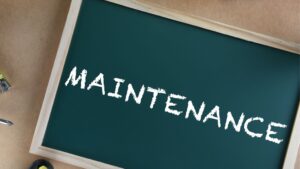
Maintenance support is a very crucial factor for a press brake. Press brakes are heavy industrial equipment, prone to occasional issues. Lack of maintenance support can lead to breakdown of the entire manufacturing operation temporarily, accumulating losses. Therefore, choose a reliable manufacturer to ensure that your machine is covered in the long term. Good manufacturers also provide every spare part at a quick notice.
Price
Press brakes have a wide price bracket. Cheaper options are pocket friendly but lack many features and automation. Expensive options can seem like a big initial investment. However, they may provide a better value for money by offering higher production. Choose a price point that matches your budget.
How much does a press brake cost?
An industrial press brake can cost anywhere from $5,000 to $500,000. The cheaper options are generally manual press brakes from unreliable suppliers. As you go up the price point, the degree of automation builds up. Additionally, you can always find a more rugged option by slightly adjusting your budget.
Warranty
A press brake should come with a warranty policy listing all the inclusions, exclusions, and the time frame. The warranty policy can indicate how much faith the manufacturer has in the product. Longer warranty periods also provide a peace of mind to the manufacturer.
Installation and Training
Buying a new press brake is only a part of the transition. The machine also requires expert installation. Additionally, the operators need training on the new equipment. It is better to go with a company that provides these options.
Controller Software
Evaluate the machine software when opting for an automated press brake. The software should be user friendly with adequate control for customization. Most good software come with preloaded programs for simple and commonly used sheet metal bends.
Space Requirements
Many users buy a press brake without evaluating the space they have in their workshop. This can cause serious problems during later operation. Measure the space available before evaluating the various press brake options. The space should include clearance for loading, unloading, and operation of the machine.
How big a press brake do you need?
The size of the press brake should be big enough to accommodate the size of the sheet metal. Additionally, sufficient space should be left around the press brake for operator movement, loading, and unloading. Maintenance process also requires certain space left empty around the equipment.
Manufacturer Reputation
Going for a branded press brake can seem slightly more expensive. However, the added expenses can provide a great amount of long-term comfort. Reputed manufacturers handle all customer concerns with an after-sales service team. Accurl is the leading press brake supplier globally in this regard.
Common Pitfalls When Buying a Press Brake

There are certain mistakes that users make when buying a press brake. These mistakes are easily avoidable if you know them beforehand. Here are these mistakes along with simple solutions to them:
- Buying a Generic Machine: Never choose a press brake just because it is popular. Evaluate your particular needs and then buy a tailored machine that can accommodate all your requirements. Buying a generic solution can lead to a machine occupying your workspace while not providing any acceptable results.
- Price Above Everything: Price should be a secondary factor when it comes to press brakes. Press brakes are going to be expensive since they are heavy industrial equipment. A cheaper option can breakdown frequently, accumulating losses due to downtimes.
- Uneducated Purchase: Thoroughly research the different options available in the market before putting your money on one. You might be able to get a better technology for the same price. You will also avoid buying problematic machines by reading user reviews online.
- Evaluating Maintenance Costs: Maintenance costs are a part of the machine investment. Consider how much it will cost to maintain the machine. Add this cost to the machine price when making comparisons.
Importance of Choosing the Right Press Brake

Making any error when buying a press brake can lead to losses and future disasters for your business. However, choosing the right machine can have several benefits, such as:
- Cost Saving: Even expensive press brakes can be a cost saving option. Spending extra on a good machine results in lower maintenance costs, lower breakdown rate, and less downtime.
- Productivity: Any issues with the press brake will lead to equipment breakdown. This will limit the number of products your machine can output. On the other hand, choosing the right machine can boost your productivity significantly.
- Safety: Inferior press brakes are cheaper but miss on many safety alternatives. Safety is an important factor for your workplace. Even minor injuries can result in major grievances and lawsuits.
- Bend Quality: The quality of your press brake will show in the quality of the sheet metal bends it creates. The right machine will create the right bend. This results in better customer satisfaction as well.
Where to Buy a Press Brake Machine?

Accurl is the leading global supplier of press brake machines. Accurl’s catalog has many product options, such as hydraulic press brake, CNC press brakes, tandem brake, servo press brake, etc.
Accurl machines are designed with utmost focus on build quality. These machines can handle all the heavy stress during operations. In case of any queries or problems, the brand provides prompt support. Spare parts are available whenever required, eliminating downtimes for the operation.
Endnotes
Spending a little extra time when buying a new press brake can mean saving a lot of money in the long term. The factors provided above will be more than sufficient to answer all your queries about choosing a press brake machine for your requirement.
For any more assistance, reach out to Accurl!


